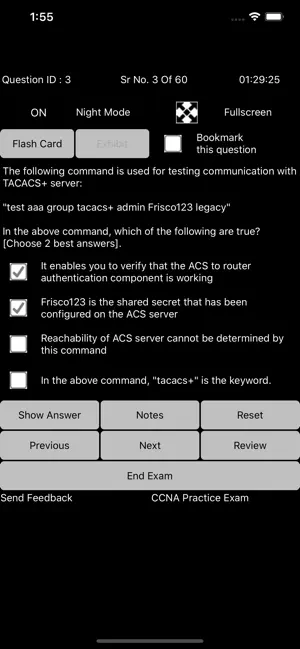In today’s fast-paced world, computer-based testing (CBT) has become an indispensable tool for assessments, certifications, and educational evaluations. Among the myriad of solutions available, SimExams CBT Software stands out as a robust, user-friendly, and highly versatile platform designed to streamline the entire testing process. Whether you’re an educational institution, a corporate training department, or a certification body, SimExams offers a comprehensive suite of features to meet your needs.
What is SimExams CBT Software?
SimExams CBT Software is a powerful application that facilitates the creation, administration, and grading of computer-based exams. It moves beyond traditional paper-and-pencil tests, offering an interactive and efficient way to assess knowledge and skills. Developed with both administrators and test-takers in mind, SimExams emphasizes ease of use without compromising on advanced functionalities.
Key Features that Make SimExams Stand Out:
- Intuitive Exam Creation:
- Diverse Question Types: SimExams supports a wide array of question formats, including Multiple Choice, Multiple Response, True/False, Fill-in-the-Blanks, Drag and Drop, Hotspot, and more. This versatility allows for the creation of engaging and comprehensive assessments.
- Rich Content Support: Integrate images, audio, and video into your questions to create a more immersive and effective testing experience.
- Question Categorization: Organize questions by topics, difficulty levels, and other custom tags, making it easy to manage large question banks.
- Flexible Exam Administration:
- Online and Offline Testing: Conduct exams online for remote participants or offline in a controlled environment, offering flexibility for various testing scenarios.
- Secure Environment: Features like secure browser lockdown, shuffled questions/answers, and timed exams help maintain the integrity of the testing process.
- Candidate Management: Easily register, track, and manage test-takers, assign exams, and monitor their progress.
- Robust Reporting and Analytics:
- Instant Grading: SimExams provides immediate grading for objective questions, saving valuable time and providing instant feedback to test-takers.
- Detailed Performance Reports: Generate comprehensive reports on individual and group performance, identifying areas of strength and weakness.
- Analytics and Insights: Gain valuable insights into exam effectiveness, question performance, and overall candidate proficiency, aiding in curriculum development and future exam improvements.
- Customization and Scalability:
- Branding Options: Customize the testing interface with your organization’s logo and branding for a professional look and feel.
- Scalable Solution: From small-scale quizzes to large-volume certification exams, SimExams can scale to meet the demands of any organization.
- Available for Android, MAC, and iOS platforms, checkout the download links here:
- https://www.simexams.com/products/cbt-exam-engine-mac.htm MAC Version
- https://www.simexams.com/products/cbt-exam-engine-android.htm Android Version
- https://www.simexams.com/products/cbt-exam-engine-ios.htm Apple Phone iOS Version
Who Can Benefit from SimExams CBT Software?
- Educational Institutions: Schools, colleges, and universities can use SimExams for conducting internal exams, admission tests, and continuous assessments.
- Corporate Training Departments: Businesses can utilize it for pre-employment testing, employee skill assessments, compliance training evaluations, and certification programs.
- Certification Bodies: Organizations offering professional certifications can rely on SimExams for secure and standardized examination delivery.
- Individual Educators and Trainers: Create and administer engaging quizzes and tests for students or trainees.
The Future of Testing is Here
SimExams CBT Software is more than just an exam delivery system; it’s a comprehensive solution that empowers organizations to conduct fair, efficient, and insightful assessments. By embracing computer-based testing with SimExams, you can enhance the testing experience for participants, reduce administrative burden, and gain deeper insights into learning outcomes.
If you’re looking to elevate your testing process, explore the capabilities of SimExams CBT Software. It’s an investment in efficiency, accuracy, and the future of effective assessment.




